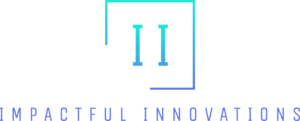Understanding the Remote Inbound Closer Role
A remote inbound closer is a sales professional who handles incoming leads, inquiries, and calls to convert prospects into paying clients without being physically present in an office. Unlike outbound sales roles, which involve actively reaching out to potential customers, inbound closers respond to individuals who have already shown interest in a product or service. Their primary responsibility is to guide the prospect through the buying process, address objections, and ultimately close the sale. This role requires a deep understanding of the product, empathy, and the ability to build trust quickly. Remote inbound closers often collaborate with marketing teams to understand lead quality and engagement trends. They play a crucial part in maintaining a company’s revenue pipeline and improving conversion rates. With the growing adoption of remote work, businesses increasingly rely on remote inbound closers to reach a wider audience efficiently and cost-effectively.
Essential Skills for Remote Inbound Closers
A successful remote inbound closer needs a unique combination of communication, analytical, and technical skills. Clear communication is essential, as the entire relationship with the client depends on conveying value effectively over the phone, email, or video call. Active listening is equally important to understand client needs and tailor responses appropriately. Persuasion and negotiation skills are crucial for addressing objections and closing deals without pressure. Proficiency in CRM platforms helps track leads, manage follow-ups, and maintain accurate records. Time management and self-discipline are necessary to balance multiple leads and maintain productivity in a remote environment. Building rapport virtually requires patience, empathy, and creativity. Consistently developing these skills ensures remote inbound closers remain competitive and effective in a fast-paced sales landscape.
Tech Tools That Enhance Remote Inbound Closing
Technology plays a pivotal role in the efficiency of a remote inbound closer. CRM platforms, such as Salesforce or HubSpot, help organize leads, monitor interactions, and generate actionable insights. Communication tools like Zoom, Microsoft Teams, and Slack enable real-time collaboration with team members and ensure seamless client interactions. Automation tools simplify repetitive tasks, such as scheduling follow-ups or sending email sequences, allowing closers to focus on high-value conversations. Analytics platforms provide performance metrics like conversion rates, call volume, and revenue generated, helping identify areas for improvement. Screen-sharing software enhances presentations and product demonstrations. Knowledge of integrated tools streamlines the sales process, creating a smooth experience for both the closer and the client. Mastery of these tools is often a differentiator between high-performing and average remote inbound closers.
Strategies for Closing Sales Remotely
Closing sales remotely requires a strategic approach tailored to virtual interactions. Handling objections effectively is critical, as clients may hesitate without face-to-face reassurance. Recognizing buying signals, such as specific questions or repeated interest in certain features, allows the closer to act at the right moment. Personalizing the sales approach increases engagement and builds trust with prospects. Consistently asking qualifying questions ensures that leads are genuine and improves conversion efficiency. Maintaining a positive tone and enthusiasm helps clients feel valued even through a screen. Following structured call scripts while remaining flexible enables the closer to adapt to each conversation dynamically. Implementing post-call follow-ups strengthens client relationships and increases the likelihood of closing the deal.
Effective Sales Techniques Include
- Listening more than speaking to fully understand client needs
- Using storytelling to illustrate product benefits
- Highlighting social proof subtly during conversations
- Maintaining a solution-oriented mindset
- Creating urgency without pressure
- Scheduling timely follow-ups for continued engagement
- Leveraging personalized offers or packages to meet client expectations
Remote Work Environment for Inbound Closers
Creating an efficient remote work environment is essential for productivity as a remote inbound closer. A dedicated home office space with minimal distractions improves focus during client calls. Ergonomic furniture, reliable internet, and proper lighting contribute to both comfort and professionalism. Maintaining work-life balance is important to prevent burnout, especially when handling high call volumes. Staying motivated remotely often involves setting daily goals, tracking achievements, and rewarding progress. Regular communication with team members fosters collaboration and maintains alignment with company goals. Using digital calendars and task management software keeps workflows organized. A structured environment allows remote inbound closers to consistently perform at their highest level while staying energized and engaged.
Benefits of Being a Remote Inbound Closer
Working as a remote inbound closer offers several advantages that appeal to modern sales professionals. Flexibility allows individuals to set schedules that suit personal needs, improving work-life integration. Remote work removes geographic limitations, providing access to a broader client base and diverse markets. High-performing closers can earn attractive performance-based incentives or commissions. Professional growth opportunities include training programs, certifications, and career advancement within sales organizations. Reduced commuting time saves money and contributes to a more sustainable lifestyle. Remote roles can also increase job satisfaction due to autonomy and independence. Overall, this career path offers both financial rewards and lifestyle benefits while enabling individuals to thrive in a digital-first work environment.
Challenges Faced by Remote Inbound Closers
Despite the benefits, remote inbound closers face challenges that require skill and resilience to overcome. Lack of face-to-face interaction can make building trust and rapport more difficult. Managing multiple leads without in-person oversight demands strong organizational skills and discipline. Communication barriers, including misinterpretation of tone or intent, may arise during virtual interactions. Maintaining consistent performance metrics requires self-monitoring and motivation. Technological issues, such as connectivity problems or software glitches, can disrupt workflow. Overcoming these challenges involves continuous skill development, adaptability, and using the right tech tools. Understanding potential obstacles ensures that remote inbound closers are prepared to handle them efficiently.
Measuring Performance and Growth
Performance measurement is critical for remote inbound closers aiming to improve results. Key performance indicators (KPIs) include call volume, lead conversion rate, revenue generated, and customer satisfaction. Monitoring these metrics provides insight into areas of strength and areas that need improvement. Regular self-evaluation and feedback from managers help identify skill gaps and training needs. Adopting a mindset of continuous learning ensures consistent professional development. Tracking progress over time highlights trends and informs strategic adjustments. High-performing remote inbound closers often set personal goals aligned with company objectives. This disciplined approach enables steady growth, higher earnings, and greater career opportunities.
Future Trends in Remote Inbound Closing
The future of remote inbound closing is shaped by technology, changing client expectations, and evolving work models. AI and automation increasingly assist with lead qualification, follow-ups, and predictive analytics. Businesses are investing in virtual sales training programs to enhance skills and increase productivity. Demand for remote sales talent continues to grow as organizations expand their digital presence. Hybrid work models may combine remote and in-office activities to balance collaboration with flexibility. Advanced communication tools and virtual reality may redefine client engagement experiences. Remote inbound closers who embrace innovation and continuous learning will remain competitive. Staying ahead of trends ensures longevity and success in this dynamic field.
Frequently Asked Questions (FAQ)
- What qualifications do you need to become a remote inbound closer?
Most roles require strong communication skills, sales experience, and familiarity with CRM tools. Formal education in business or marketing is beneficial but not always required. - How much can a remote inbound closer earn?
Earnings vary widely based on experience, industry, and performance. Many remote closers earn base salaries plus commissions, making high-income potential achievable. - Can you be effective without prior sales experience?
Yes, with proper training, coaching, and dedication, even beginners can excel as remote inbound closers. Soft skills like listening, persuasion, and empathy are often more critical initially. - How do remote inbound closers stay motivated?
Setting daily targets, tracking performance metrics, celebrating small wins, and maintaining communication with team members help sustain motivation. - What is the difference between an inbound and outbound closer?
Inbound closers respond to incoming leads and inquiries, while outbound closers proactively reach out to prospects who may not have shown prior interest.
Takeaway
The role of a remote inbound closer offers an exciting combination of flexibility, professional growth, and financial potential. Mastering the skills, strategies, and tools required ensures consistent performance and career advancement. While challenges exist, preparation, organization, and continuous learning make it possible to thrive in this digital-first sales environment. By focusing on communication, rapport-building, and technology, remote inbound closers can excel and drive meaningful results for both themselves and the companies they represent.




